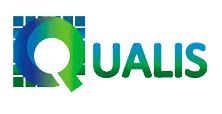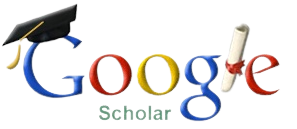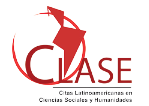Emerging questions in the Information Science domain
DOI:
https://doi.org/10.5433/1981-8920.2017v22n2p320Keywords:
Information Science, Information Process, Information Professional, Information Professional CompetenciesAbstract
Introduction: the present article reflects on the emerging themes of the Information Science area. It presents some evolving concepts related to the area and discusses aspects around the researches in progress, as well as evaluates the role of information professionals in the scope of scientific research. Objective: To discuss what is Information Science. To understand how research is being evaluated in this scientific field. To study how the information professionals are currently seen and what are the desired competences for these professionals. Methodology: Bibliographic research. Results: The results indicate that information science is a social, informative and communicative science that has as object of study an informational process that consists of retention, retrieval and transformation of information to generate new knowledge.In the scientific reserach context, information Science brings together several áreas of acience that have as objetc of study the informative-documentary process, being the majority of the research of a qualitative nature. Among the various competencies of the information professional, the study emphasizes the reading learning exercise, since this professional acts directly in several areas of knowledge. Conclusions: the study focused on the Information Science area in three aspects: what is the Information Science, what are the most developed researches in the field today and what are the skills of the information professionals. The Information science is a growing area and needs a permanent debate, mainly investigations that cover these three aspects mentioned, since they complement each other.Downloads
References
BORREGO, A. Altmétricas para la evaluación de la investigación y el análisis de necesidades de la investigación. El profesional de la investigación, v. 23, n.4, 2014.
CODINA BONILLA, L. La gran disrupción: la web + los dispositivos móviles y lo que podemos hacer. Informes ThinkEPI sobre Documentación y Comunicación. Barcelona, v.1, s/n, p. 5-7, 2015.
EDEL NAVARRO, R.; AGUIRRE AGUILAR, G.; BALDERRAMA TRÁPAGA, J.A. La contribución didáctica de las TIC en el desarrollo de competencias para la investigación. Ideales, v.1, n.1, p. 209-227, 2016. Disponível em: http://revistas.ut.edu.co/index.php/Ideales/article/view/1080.
GARCÍA, J. Las competencias del siglo 21: Un modelo de acercamiento desde la educación. In: GARCÍA, J; LEÓN, T; OROZCO, E. Desarrollo de competencias para el siglo XXI. Miami: Humboldt International University, 2016, p. 15-45.
LÓPEZ YEPES, J. La lectura crítica como recurso didáctico. Modelos y métodos. México DF: Universidad Panamericana, 2015a.
LÓPEZ YEPES, J. La dirección/asesoría de tesis. Materiales para una manual de buenas prácticas. México DF: Universidad Panamericana, 2015b.
LÓPEZ YEPES, J. La ciencia de la información documental. El documento, la disciplina y el profesional de la información en la era digital. México, D.F.: Universidad Panamericana, 2015.
PRADA, J. M. "Una vida nerviosa". XI Semanal, 7 de febrero de 2014.
TORRES-SALINAS, D.; CABEZAS-CLAVIJO, A. Y.; JIMÉNEZ-CONTRERAS, E. Nuevos indicadores para la comunicación científica en la Web 2.0. Comunicar, v. 21, n. 41, out. 2013.
TORRES-SALINAS, D.; MILANÉS-GUISADO, Y. Presencia en redes sociales y altmétricas de los principales autores de la revista El profesional de la información. El profesional de la información, v. 23, n.4, jul/ago. 2014
Downloads
Published
How to Cite
Issue
Section
License
Copyright (c) 2021 Informação & Informação

This work is licensed under a Creative Commons Attribution 4.0 International License.
A revista se reserva o direito de efetuar, nos originais, alterações de ordem normativa, ortográfica e gramatical, com vistas a manter o padrão culto da língua e a credibilidade do veículo. Respeitará, no entanto, o estilo de escrever dos autores. Alterações, correções ou sugestões de ordem conceitual serão encaminhadas aos autores, quando necessário.
O conteúdo dos textos e a citação e uso de imagens submetidas são de inteira responsabilidade dos autores.
Em todas as citações posteriores, deverá ser consignada a fonte original de publicação, no caso a Informação & Informação.














